#garmin support number
Explore tagged Tumblr posts
Text
Build Gym & Workout Apps with a Leading Fitness App Development Company
In today’s fast-paced, health-conscious world, fitness is more than just a trend—it’s a lifestyle. With smartphones becoming an extension of ourselves, the fitness industry is rapidly shifting towards digital platforms. Whether it's tracking workouts, monitoring nutrition, or providing on-demand training programs, fitness apps have become a vital tool for gyms, trainers, and fitness brands.
If you're a business owner looking to tap into this booming market, partnering with a leading fitness app development company can take your brand to the next level. Here's how a professional tech partner can help you build gym and workout apps that not only meet user expectations but also drive measurable business growth.
1. Tap Into a Growing Market of Health Enthusiasts
The demand for fitness apps is skyrocketing. From gym-goers to home workout enthusiasts, users are looking for personalized, convenient, and interactive digital fitness experiences.
A professional fitness app development company can help you create a solution tailored to your niche—whether you're running a local gym, offering personal training, or launching your own fitness brand. With the right app, you can expand your reach, engage a wider audience, and stay connected with your members anytime, anywhere.
2. Custom Features That Engage and Retain Users
Off-the-shelf apps can't offer the depth of customization and branding that a custom-built app can. When you work with a fitness app development company, you get to build a platform with features your audience actually wants, such as:
Personalized workout plans
Diet and nutrition tracking
Progress monitoring and analytics
Video tutorials and live workout streaming
In-app chat with trainers
Push notifications and reminders
Gamification and reward systems
These features not only enhance user engagement but also increase retention and build long-term brand loyalty.
3. Seamless Integration with Wearables and Devices
Modern fitness is data-driven. Whether it’s counting steps, heart rate, or calories burned—users want real-time insights from their wearables. A fitness app development company can integrate your app with popular devices like Fitbit, Apple Watch, Garmin, and other fitness trackers to provide a seamless and personalized fitness journey.
This not only improves the user experience but also sets your app apart in a highly competitive market.

4. Monetize Your Fitness Business
A fitness app opens multiple revenue channels beyond traditional gym memberships. Some proven monetization models include:
Subscription plans for premium content
One-on-one virtual training sessions
In-app product sales (fitness gear, supplements, etc.)
Advertising and brand collaborations
Paid challenges and competitions
A development company can help you build and integrate secure payment systems, set up subscription tiers, and optimize revenue without compromising the user experience.
5. Scalable Solutions for Long-Term Growth
Whether you're a solo fitness coach or a nationwide gym chain, your app should grow as your business does. A trusted development partner will design your app with scalability in mind, ensuring it can handle a growing number of users, new features, and expanding content without performance issues.
This future-proof approach ensures that your investment pays off as your business grows.
6. Launch Faster with Expert Development Teams
Time is crucial when launching a digital product. A professional fitness app development company brings domain expertise, ready-to-use modules, and agile development processes that significantly reduce the time to market.
With experienced UI/UX designers, backend developers, and QA teams working in sync, your app can go live quickly—just in time to capture seasonal fitness trends or New Year resolution booms.
7. Ongoing Support and Feature Upgrades
A successful app needs more than just a great launch—it requires continuous updates, new features, and bug fixes based on user feedback. Development companies offer post-launch support and maintenance packages to keep your app optimized, secure, and aligned with the latest fitness tech trends.
This ongoing support ensures your users always have the best experience, which helps you maintain a competitive edge.
Final Thoughts
The future of fitness is digital. Whether you're building a gym membership app, a workout planner, or an online personal training platform, investing in a custom fitness app is a strategic move. By working with a leading fitness app development company, you gain access to technical expertise, industry insights, and a dedicated team focused on turning your vision into a high-performing product.
So, if you're ready to transform your fitness business into a powerful digital brand, now is the perfect time to build your own gym and workout app.
Looking to Build a Fitness App?
Partner with Dinoustech, a trusted fitness app development company with a proven track record in building scalable, feature-rich, and user-friendly fitness solutions. Let’s bring your app idea to life—step by step, rep by rep.
For more information, visit us: -
Fantasy Sports App Development Company
MLM Software Development Company
Taxi Booking App Development Company
0 notes
Text
Military Wearable Medical Devices Market set to hit $117.7 billion by 2035
Industry revenue for Military Wearable Medical Devices is estimated to rise to $117.7 billion by 2035 from $9.0 billion of 2024. The revenue growth of market players is expected to average at 26.3% annually for the period 2024 to 2035.
Military Wearable Medical Devices is critical across several key applications including health monitoring, wound management, cognition & mental health management and telemedicine. The report unwinds growth & revenue expansion opportunities at Military Wearable Medical Devices’s Product Type, End User, Use Case and Technology including industry revenue forecast.
Industry Leadership and Competitive Landscape
The Military Wearable Medical Devices market is characterized by intense competition, with a number of leading players such as Fitbit Inc, Garmin Ltd, Koninklijke Philips NV, Medtronic plc, Omron Corporation, Polar Electro, Samsung Electronics Co. Ltd, Xiaomi Corporation, Apple Inc, Draegerwerk AG & Co. KGaA, Abbott Laboratories and Becton Dickinson and Company.
The Military Wearable Medical Devices market is projected to expand substantially, driven by rising concerns over soldiers health and technological advancements in healthcare wearables. This growth is expected to be further supported by Industry trends like Increasing Defense Budget Allocations for Healthcare.
Detailed Analysis - https://datastringconsulting.com/industry-analysis/military-wearable-medical-devices-market-research-report
Moreover, the key opportunities, such as integration of advanced ai, cyber-security for medical wearables and utilization in mental health monitoring, are anticipated to create revenue pockets in major demand hubs including U.S., China, UK, Russia and Israel.
Regional Shifts and Evolving Supply Chains
North America and Asia Pacific are the two most active and leading regions in the market. With challenges like high development and manufacturing costs and regulatory hurdles, Military Wearable Medical Devices market’s supply chain from raw material procurement / component manufacturing and assembly / device manufacturing to end user applications is expected to evolve & expand further; and industry players will make strategic advancement in emerging markets including Brazil, Israel and India for revenue diversification and TAM expansion.
About DataString Consulting
DataString Consulting offers a complete range of market research and business intelligence solutions for both B2C and B2B markets all under one roof. We offer bespoke market research projects designed to meet the specific strategic objectives of the business. DataString’s leadership team has more than 30 years of combined experience in Market & business research and strategy advisory across the world. DataString Consulting’s data aggregators and Industry experts monitor high growth segments within more than 15 industries on an ongoing basis.
https://datastringconsulting.com/downloadsample/military-wearable-medical-devices-market-research-report
DataString Consulting is a professional market research company which aims at providing all the market & business research solutions under one roof. Get the right insights for your goals with our unique approach to market research and precisely tailored solutions. We offer services in strategy consulting, comprehensive opportunity assessment across various sectors, and solution-oriented approaches to solve business problems.
0 notes
Link
Forerunner 630 has all the numbers to measure a runner. The touchscreen GPS running watch features advanced running dynamics1, extended physiological3 measurements, and extensive smart features2. The 630 also measures your heart to provide a stress score3, performance condition3 and lactate threshold3. Pairing with an HRM-Run also enables advanced running dynamics: ground contact time balance, vertical ratio, and real-time stride length. Smart features2 include e-mail, text, call and calendar smart notifications, and Connect IQ applications, watch faces, widgets and data fields. Additional connected features2 include automatic uploads to Garmin Connect, audio prompts and live tracking. 2ND GENERATION RUNNING DYNAMICS -Calculates 6 advanced running dynamics: stride length, ground contact time balance, vertical ratio, cadence, vertical oscillation and ground contact time PHYSIOLOGICAL MEASUREMENTS -Supports advanced physiological measurements: stress score, performance condition, lactate threshold, recovery time, VO2 max, predicted race times BATTERY LIFE - Long-lasting, user-replaceable battery. WIRELESS - Wirelessly transmits accurate heart rate to your compatible device SMART NOTIFICATIONS - See incoming email, text messages, call alerts, calendar reminders and more from your compatible smartphone. Enhanced running dynamics include ground contact time balance, stride length and vertical ratio when used with Garmin HRM-Run heart rate monitor Features stress score, performance condition and lactate threshold when used with a compatible Garmin heart rate monitor Connected features: Automatic uploads to Garmin Connect, live tracking, audio prompts, smart notifications, social media sharing and music control Customised training plans from Garmin Connect on your watch for real-time coaching Activity tracking counts steps, distance, pace, cadence and calories burned indoors and out
0 notes
Text
See climbing culture: a trend in sprinkles
With the rise of horology in recent years, the watches have developed beyond simple timepiece to become a symbol of style, creativity and personality. The clock industry has developed to complete a diverse spectrum of consumers, combining innovation and tradition in smartwatches from high -end brands. This blog increases the growing demand and factors that make it a timeless design.
The situation and purification have long been associated with watches. Luxury brands such as Rolex, Patek Philip, and Adams Piaget have been acclaimed for both their accurate and creativity. Each watch gives an example of laborious craftsmanship which takes months or even years. A luxury clock is seen as an important achievement by many people showing how much importance they give to excellent engineering. However, watches are not just a luxury item. Cost-affected businesses such as Cecco, Casio and TimeX have also set up a market by offering suitable watches for everyday use. These businesses suggest that the world does not cost due to having a reliable and stylish watch.
Smartwatch revolutionized the market by drawing the device by drawing in tech-service consumers. The equipment made by firms like Apple, Samsung, and Garmin is now able to track fitness matrix, keeping an eye on health, and even to pay employees. The younger generation enjoys smartwatch as they have helped to bridge the gap between fashion and technology. Despite their contemporary characteristics, the traditional timepiece is not suppressed by Smartwatch. Rather, they co -existence in various needs and desires. Some people may prefer smartwatch features, while others will prefer a mechanical watch with periodic design.
Beyond just luggage, watches are the way to express a person's personality. Your choice of clock, whether it is a minimum design, an item with a dramatic chronograph, or vintage vibe, reveals a lot about your values and style of style. Collectors often curated their collection based on their individual priorities; Some may focus on rare historical models, while others will focus on contemporary designs.
In addition to brands offering individual options, adaptation has become more and more common. With features such as engraved starting and adjustable straps, see AFicionados can now personalize your timepiece.
The clock business has adopted stability in response to the increasing environmental consciousness of consumers. The brands are now using recycled materials, moral sourcing practices and environmentally friendly packaging. For example, Panerai has introduced recycled titanium-made clock, and oris has participated with environmental groups to support conservation efforts. This trend towards stability is meant to accommodate the increasing number of consumers who hold high values on moral consumption.
Innovation and tradition are still developing in the clock industry. While the mechanical timepiece symbolizes the past, smartwatch and sustainable practices are shaping the future. Interest in horology has also increased as a result of the development of social media and online forums where enthusiasts exchange knowledge and passion.
Finally, the clock serves as a symbol of culture, artistry and personality, in addition to providing equipment to determine time. Despite your priority for a high-end clock design, the functionality of the smartwatch, or the attraction of a vintage model, is a clock for all. The clocks will remain popular until the industry innovates.
0 notes
Text
The Best Smartwatches for Monitoring Heart Health in 2025
In 2025, smartwatches have become an indispensable tool for monitoring heart health. As a growing number of individuals turn to wearable technology for tracking fitness and wellness, these devices now offer highly advanced features to keep an eye on heart health. For those seeking professional glove guidance, heart health monitoring with a smartwatch can complement the expertise of a doctor or specialist, and be integrated into a hospital's wellness programs or diagnostic center. With real-time insights, users can detect potential issues early, often before symptoms arise, which is a game-changer for preventive care.
One of the top contenders in 2025 is the Apple Watch Series 9, which continues to excel in heart health monitoring. With an ECG app and the ability to detect irregular heart rhythms, it remains a go-to choice for users looking for a medically reliable device. The Samsung Galaxy Watch 6 is another solid option, with its enhanced heart rate sensor and blood pressure monitoring capabilities, offering a more comprehensive heart health tracking system. Additionally, Fitbit Charge 6 provides users with continuous heart rate tracking and stress management tools, making it an affordable alternative for everyday users.
For those who prioritize a medical-grade experience, the Withings ScanWatch Horizon provides FDA-approved ECG capabilities and a pulse oximeter, making it a great choice for more serious health tracking. Similarly, Garmin Forerunner 965 stands out for athletes, offering advanced metrics for heart health, including VO2 max estimates and lactate threshold measurements, ideal for monitoring performance and recovery.
In 2025, the best smartwatches for heart health offer a wide range of features, from basic monitoring to comprehensive medical-grade tools, helping users make informed decisions for their well-being. Whether you are visiting a doctor or relying on at-home monitoring, these devices provide critical data to support heart health management.
0 notes
Text
Canada Digital Health Market Analysis: Growth, Trends, and Future Potential
The Canada digital health market is undergoing significant transformation, driven by advances in technology, rising demand for telemedicine, and the growing use of health-related mobile apps and wearables. As the healthcare system in Canada shifts towards more integrated, patient-centric approaches, digital health solutions are becoming essential tools for improving healthcare delivery, enhancing patient outcomes, and reducing costs.
Buy the Full Report for More Insights into the Canada Digital Health Market Forecast
Download a Free Sample Report
1. Market Overview
The digital health market in Canada has seen steady growth, with an estimated market size of $6.5 billion in 2023. The market is expected to grow at a compound annual growth rate (CAGR) of 8.5% from 2024 to 2030, driven by the increasing adoption of telehealth services, electronic health records (EHRs), and wearable health devices. The shift toward remote healthcare, accelerated by the COVID-19 pandemic, has further pushed healthcare providers to adopt digital solutions.
2. Key Trends in the Canada Digital Health Market
2.1. Telemedicine and Remote Monitoring
The adoption of telemedicine has surged in Canada, particularly during the COVID-19 pandemic. Telemedicine enables healthcare providers to offer consultations, diagnoses, and follow-up care via digital platforms, reducing the need for in-person visits.
Benefits: Increased accessibility to healthcare for rural and underserved populations, reduced patient wait times, and lower costs for healthcare providers.
Remote Monitoring: Wearable devices and remote monitoring tools are enabling real-time tracking of patients' vital signs, leading to more proactive care and better chronic disease management.
2.2. Adoption of Electronic Health Records (EHRs)
EHRs are becoming an essential part of Canada's digital healthcare infrastructure. EHRs allow healthcare providers to store and share patient health information electronically, improving coordination and reducing errors in healthcare delivery.
Integration: Efforts are underway to ensure the seamless integration of EHR systems across different healthcare institutions and providers, leading to more efficient and accurate patient care.
Data Security: With the rise of EHRs, there is a growing emphasis on protecting patient data through advanced encryption and cybersecurity protocols.
2.3. Health Apps and Wearable Devices
The increasing use of mobile health apps and wearables is empowering patients to take control of their health and wellness. These tools allow users to track fitness, monitor vital signs, and manage chronic conditions like diabetes and hypertension.
Popular Apps: Applications that offer fitness tracking, diet monitoring, mental health support, and medication reminders are gaining traction in Canada.
Wearable Devices: Companies like Apple, Fitbit, and Garmin continue to innovate in the wearable health tech space, providing consumers with more sophisticated tools for monitoring heart rate, sleep patterns, and physical activity.
3. Growth Drivers
3.1. Aging Population and Chronic Disease Management
Canada has an aging population, with the number of seniors projected to increase significantly over the coming decades. This demographic shift is driving demand for digital health solutions that support chronic disease management, such as telemedicine, remote monitoring devices, and health apps.
Chronic Diseases: Conditions such as diabetes, cardiovascular diseases, and arthritis require ongoing care, and digital health solutions can help monitor and manage these conditions more effectively.
Home Healthcare: Digital health tools are enabling elderly patients to receive care in the comfort of their homes, reducing hospital readmissions and healthcare costs.
3.2. Government Initiatives and Funding
The Canadian government has been investing in digital health infrastructure to improve the healthcare system’s efficiency and accessibility. Various initiatives aim to promote the adoption of telehealth services, enhance the use of EHRs, and support innovation in digital health technologies.
Canada Health Infoway: This federally funded organization has been instrumental in promoting the adoption of digital health technologies across Canada, with a focus on improving patient access and enhancing the quality of care.
Funding Programs: Government funding programs support the development of new digital health platforms, incentivizing healthcare providers to adopt these technologies.
3.3. Consumer Demand for Convenience and Accessibility
The rising demand for convenient healthcare solutions is another significant driver of the digital health market in Canada. Consumers are increasingly seeking on-demand healthcare services that can be accessed remotely, without the need for in-person visits.
Mobile Health: The proliferation of smartphones and mobile internet access has made it easier for Canadians to access health-related services on their devices, contributing to the growth of mobile health apps.
On-Demand Healthcare: The convenience of digital health platforms is appealing to younger, tech-savvy patients who prefer virtual consultations and digital health tools.
4. Competitive Landscape
The Canada digital health market is highly competitive, with several players vying for market share. Key players include Teladoc Health, WELL Health Technologies, CloudMD, and Dialogue. These companies are innovating with telemedicine platforms, EHR solutions, and health apps to meet the evolving needs of Canadian patients and healthcare providers.
Teladoc Health: A global leader in telemedicine, Teladoc offers virtual care services that connect patients with healthcare professionals remotely.
WELL Health Technologies: A Canadian company focused on digital health innovation, WELL Health offers a range of solutions, including telehealth, EHRs, and patient engagement tools.
CloudMD: Known for its virtual healthcare platform, CloudMD is expanding its presence in the Canadian digital health market with an emphasis on mental health and primary care.
5. Future Outlook
The future of the Canada digital health market is bright, with significant growth potential driven by technological innovation, increasing government support, and rising consumer demand for digital health solutions. Key trends expected to shape the future include:
Artificial Intelligence (AI) and Machine Learning: AI-powered tools are being developed to improve diagnostics, personalize treatment plans, and enhance patient outcomes.
5G Connectivity: The rollout of 5G networks in Canada will further accelerate the adoption of digital health solutions by enabling faster, more reliable connections for telemedicine and remote monitoring.
Data Analytics: Advanced data analytics will play a crucial role in enabling healthcare providers to leverage big data for predictive analysis and more accurate treatment outcomes.
Conclusion
The Canada digital health market is on an upward trajectory, with rapid advancements in telemedicine, EHRs, mobile health apps, and wearable devices. As the healthcare industry continues to embrace digital transformation, the adoption of innovative digital health solutions will be essential in enhancing patient care, improving health outcomes, and addressing the challenges posed by an aging population and rising healthcare costs.
0 notes
Text
The Ultimate Guide to Bluetooth Watches: Features, Benefits, and Recommendations
Mobile devices with Bluetooth capabilities have completely changed how we regularly engage with technology. In addition to telling the time, these smart devices also easily integrate with other gadgets and smartphones, offering a number of features that improve productivity and convenience. This guide will go over the many functions of Bluetooth watches, their advantages, and some choices for the top models on the market right now.

Key Features of Bluetooth Watches
Connectivity: The primary feature of a Bluetooth watch is its ability to connect wirelessly to smartphones and tablets. This connectivity allows users to receive notifications for calls, messages, emails, and social media alerts directly on their wrist.
Fitness Tracking: Many Bluetooth watches come equipped with fitness tracking capabilities. They can monitor heart rate, track steps taken, calculate calories burned, and even provide GPS tracking for outdoor activities like running or cycling.
Customization: Users can often customize their Bluetooth watch faces and interfaces according to personal preferences. This includes changing watch faces, adjusting settings for notifications, and selecting which apps to sync.
Voice Control: Some advanced models include voice assistant integration (such as Google Assistant or Siri), allowing users to perform tasks hands-free by simply speaking commands.
Health Monitoring: Beyond fitness tracking, many Bluetooth watches offer health monitoring features such as sleep tracking, stress management tools, and ECG (electrocardiogram) capabilities that can detect irregular heart rhythms.
Battery Life: Battery life varies significantly among different models; some can last several days on a single charge while others may require daily charging depending on usage patterns.
Benefits of Using a Bluetooth Watch
Convenience: With notifications at your fingertips, you can stay connected without constantly checking your phone.
Health Awareness: Continuous monitoring of physical activity encourages healthier lifestyle choices.
Safety Features: Some models include emergency SOS features or fall detection that can alert contacts in case of an emergency.
Fashion Statement: Many Bluetooth watches are designed with aesthetics in mind, making them stylish accessories suitable for various occasions.
Top Recommendations for Bluetooth Watches
Apple Watch Series 8
Known for its seamless integration with iOS devices, the Apple Watch Series 8 offers extensive health monitoring features including blood oxygen levels and ECG functionality.
Samsung Galaxy Watch 5
This model is favored by Android users for its robust fitness tracking capabilities and long battery life while maintaining a sleek design.
Fitbit Versa 4
A great option for fitness enthusiasts looking for comprehensive health metrics without the need for smartphone connectivity at all times.
Garmin Venu 2
Ideal for athletes due to its advanced GPS capabilities and detailed performance metrics tailored towards sports training.
Fossil Gen 6
Combines traditional watch aesthetics with modern smartwatch functionalities; it runs on Wear OS by Google which supports a variety of apps.
Conclusion
Bluetooth watches are more than just timepieces; they are multifunctional devices that enhance our daily lives through connectivity and health monitoring. Whether you’re looking to improve your fitness routine or simply want an easier way to manage notifications from your smartphone, there is likely a Bluetooth watch that fits your needs perfectly.
0 notes
Text
A Different Kind of Record
There are numerous records associated with the PCT. The most obvious is the FKT or fastest known time. Then there is the variation of FKT* or fastest known time without support. In addition there are such things as the 'Oregon challenge' which is based on how fast hikers can walk the length of the Oregon PCT.
My partners and I have joked about our SKT or slowest known time in reference to how long it took us to complete the PCT and more importantly how we approach each day on the trail. Our style is not to crush miles but to more generally embrace them. We don't necessarily approach any of our hikes with the thought of setting specific records. Our goal is to simply enjoy our time together as that establishes a different kind of record. A record of yet another memorable time together.
Our lives today are absolutely saturated with technology. In 2022, an app monitoring firm found that people across the world were spending an average of 4.8 hours per day on mobile apps. Studies on digital addiction and screen time published by the National Bureau of Economic Research and the Pew Research Center reveal a lack of choice when it comes to our phones and the places they take us: sites designed, often explicitly, to tether us by the eyeballs to our screens. The impacts can be devastating to our mental health and wellbeing, and may be tied to rising rates of depression and anxiety.
On the other hand part of the conversation around technology centers on those who have accessed technology in the past generally were those who possessed the financial resources to pursue it. Over the past few decades as computers and later cell phones got more than a hand hold in people's lives technology began to spread its influence. With this spread came inherent privilege. The people who were welcoming technology into their lives could also afford it. As time has passed, affordability became less an obstacle and technology more a tool for a majority of people. But we are not going to further that discussion here as this point of view only sets up where I am going next.
I am sure we can agree technology does offer people many benefits. One appears to be a connection to others. Technology can also provide a link to safety. In the hiking world it provides route guidance and a modicum of connection to others and for potential rescue.
One of my hiking partners has shared that every so often he takes a technology break. He unplugs for a day and experiences life without the 'assistance' of technology. In other words, no phone, no computer. Unplugging gives Jim space for less interrupted reflection. I have admired his determination to free himself from technology even for a day.
Given the various potential challenges or aka. 'records' that have emerged since the numbers of hikers has continually increased over the decades a different kind of record comes to mind. Consider this a 'throwback' record. How about an attempt to hike all or part of the PCT without technology? You know, paper maps and printed guides...even access to a compass (a former techno marvel). I admit that Halfmile's and later Guthooks and now Far Out have proven useful to me on the PCT. I wonder what a PCT experience would be without actively accessing phone or earbuds but instead fully seeing and hearing the world around me. No online blogs but a pencil and paper journal if one was so inclined. I don't think it would be dis-qualifier to bring a Garmin or similar device in case of emergency as that could be prudent.
To me this could be every bit as meaningful a record as how fast someone(s) walked a section or the whole length of the PCT. It raises some great questions too. Such as, what did it feel like to not be technologically connected? Was it scarier without technology? Was your confidence lifted over time as a result of unplugging? Did going without technology enhance or take away from your overall experience and if so, in what ways? How hard was it to hike unplugged?
In a time when so much of what people do or attempt to do is synonymous with being an extreme sport maybe a throwback record of unplugging is just another extreme form. I don't know to be honest but I do find it intriguing. Back when my partners and I started hiking sections of the PCT we were unplugged as there was nothing to plug into. For example the ski area parking lot at Stevens Pass still had a pay phone that we actively accessed for contact with friends and family. That was technology but it was stationary and now there is no trace of it there or many other places. We checked in, providing someone answered on the other end, and then walked on. Ignorance beyond the trail was some kind of bliss. We had maps and a guidebook to show us the way.
As I write this and read it back I sound ancient. I am not too ancient but just wondering how this might be for someone in the first third of the 21st century? Does it have any appeal? Is it even necessary? To be fair, is it necessary to go as fast as possible between Campo and the Canadian border or from the Oregon-California border to the Columbia River? Isn't the most necessary challenge making your hike the most memorable experience you can plugged or unplugged? It is all a great challenge if to do nothing else but to simply imagine.

Thoreau and Whitman unplugged
1 note
·
View note
Text
The global personal navigation devices market leads to an approximate CAGR of 8.2% in the global market during the forecast period, and projects a revenue valued at US$ 2,875 Million in 2022, and is expected to cross US$ 6,340 Million by 2032.
The increasing deployment of e-hailing services across the globe is likely to escalate the demand for personal navigation devices. The implementation of Internet of Things (IoT) in GPS devices to transfer data remotely and communicate with other systems and sensors surges the adoption of personal navigation devices.
This software provides turn-by-turn directions to the user to reach a destination. Most personal navigation devices being developed today, include a voice output that can provide clear-cut details without distracting the user.
Request a Sample Report to Learn about Recent Personal Navigation Devices Market: https://www.futuremarketinsights.com/reports/sample/rep-gb-6189
The devices that only supported navigation, initially, now support other features such as multimedia player, mobile hands-free systems, external application support, games, and travel utilities (measurement converter, currency converter, world time, calculator et cetera). Any user can use these personal navigation devices without any special training, qualifications or skills. Personal Navigation Devices Market Drivers and Challenges:
One of the trends in the automobile industry that drives the personal navigation devices market is the integration of navigation-supported security and safety features in automobiles. With the steady rise in the number of personal on-road vehicles, thefts and accidents have also increased.
Manufacturers are incorporating safety and security applications in navigation systems. Advanced Driver Assistance System (ADAS) is an example of a personal navigation system where the device has built-in features with additional intelligent sensors and units to keep track of road conditions and traffic, safety-related details regarding roads like lane changing assistance, and speed breaker notifications.
However, escalating user expectations and increase in feature related complexity hinders the growth of the personal navigation devices market. Repeated updating is necessary for personal navigation devices without proper intelligent units to get proper directions to the destination. Sometime, this could be a tedious task which makes it a challenge for the personal navigation devices market. Also, increase in competition from mobile phones and other handset-based navigation services will eventually restrict the growth of the global personal navigation devices market.
Major Key Players:
Some of the prominent vendors in the Personal Navigation Devices Market are TomTom International BV., Garmin Ltd., MiTAC International Corporation, Magellan GPS, Blaupunkt worldwide, Masternaut Limited, NAVIGON, AvMap Satellite Navigation, Inc., Becker Navigations and TeleNav
0 notes
Text
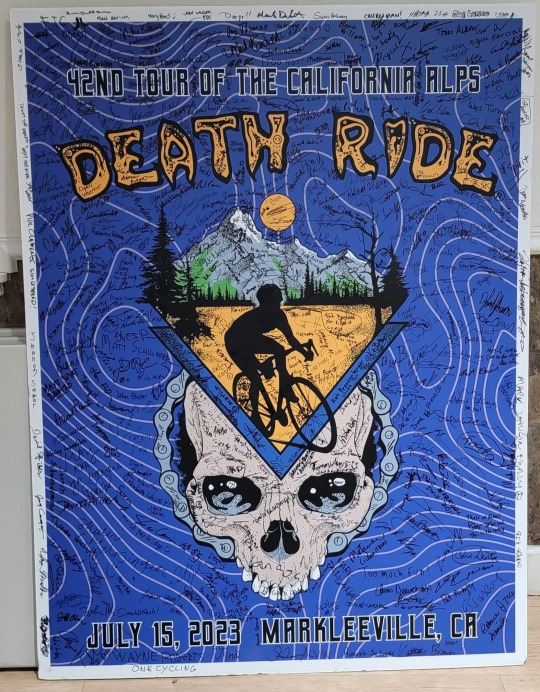
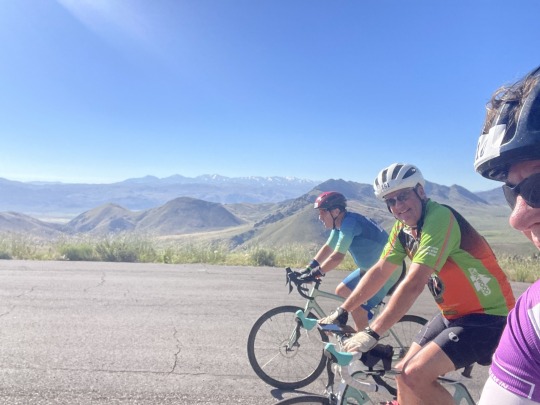

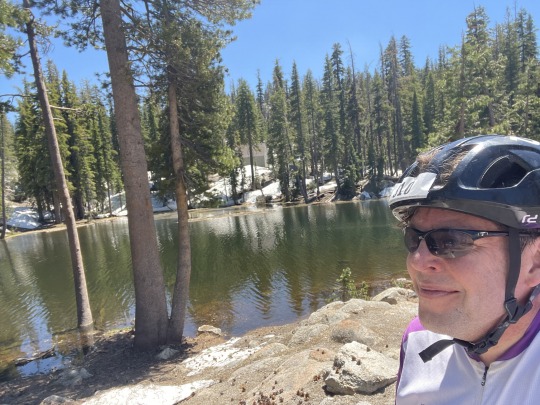








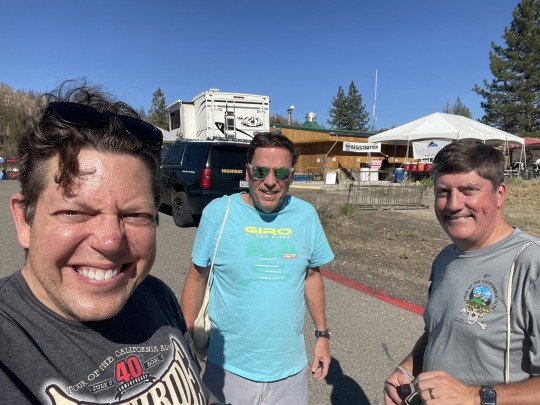







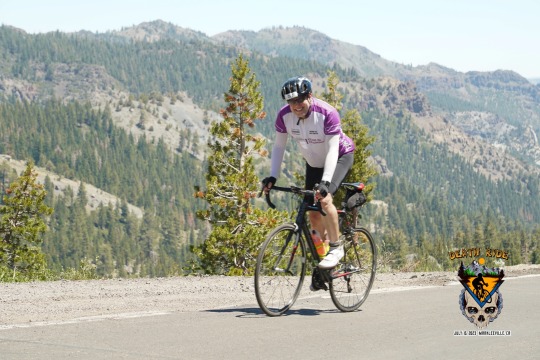



Death Ride 2023...Success!
This one is HUGE. The ride is advertised as 104 miles with 14K of climbing. My Garmin had the numbers slightly lower, but I’m not quibbling. It was an epic weekend with Mike (happy birthday!) and his cousin Neil. The Death Ride took place on a brutally hot day in Alpine County on Saturday, July 15th. We left from Markleeville at 5am and were done with the first two big climbs by 9:15am, which was good because it was starting to get very hot. According to my Garmin, the temperature went from 55 degrees at 5am to over 100 degrees at 11am. The forecast was for high of 95 degrees - not sure the Garmin was accurate, but you get the point...it was a scorcher. And the heat took its toll. Neil called it a day after the second pass. Mike was the strongest on the first two climbs but he was really suffering from the heat at the top of Ebbetts, the third pass. He said, "finish it for me" and so I did. The area from Hermit Valley to Alpine Lake is beautiful. I had to walk up some really steep parts including a 20% grade to avoid cramping. I've been victim of cramping at Death Ride in the past so was doing all I could to avoid them, from bananas & electrolyte capsules to sports drink, pickle juice, and V8. I made it out to the far point on the course, the turnaround at Alpine Lake just as the rest stop was shutting down. On the way up the back side of Ebbetts, the cramps hit my right leg so I walked it. I got two bananas, topped off the electrolyte drink at the top of Ebbetts and was able to recover somewhat on the long descent back to Markleeville. Mike was there in the town center with an ice-cold Gatorade knockoff and it was so good. Thank you, Mike! I couldn't have finished without your support, today and throughout our training. I was able to do the last climb to Turtle Rock and finished at 6:45pm, just before the finish line shut down at 7pm...Whew! After the ride, we packed up our campsite at Grover Hot Springs and stayed with Neil at a nice AirB&B in South Lake Tahoe, and the Guiness was so good. Cheers to finally finishing the Death Ride!
0 notes
Link
Forerunner 630 has all the numbers to measure a runner. The touchscreen GPS running watch features advanced running dynamics1, extended physiological3 measurements, and extensive smart features2. The 630 also measures your heart to provide a stress score3, performance condition3 and lactate threshold3. Pairing with an HRM-Run also enables advanced running dynamics: ground contact time balance, vertical ratio, and real-time stride length. Smart features2 include e-mail, text, call and calendar smart notifications, and Connect IQ applications, watch faces, widgets and data fields. Additional connected features2 include automatic uploads to Garmin Connect, audio prompts and live tracking. 2ND GENERATION RUNNING DYNAMICS -Calculates 6 advanced running dynamics: stride length, ground contact time balance, vertical ratio, cadence, vertical oscillation and ground contact time PHYSIOLOGICAL MEASUREMENTS -Supports advanced physiological measurements: stress score, performance condition, lactate threshold, recovery time, VO2 max, predicted race times BATTERY LIFE - Long-lasting, user-replaceable battery. WIRELESS - Wirelessly transmits accurate heart rate to your compatible device SMART NOTIFICATIONS - See incoming email, text messages, call alerts, calendar reminders and more from your compatible smartphone. Enhanced running dynamics include ground contact time balance, stride length and vertical ratio when used with Garmin HRM-Run heart rate monitor Features stress score, performance condition and lactate threshold when used with a compatible Garmin heart rate monitor Connected features: Automatic uploads to Garmin Connect, live tracking, audio prompts, smart notifications, social media sharing and music control Customised training plans from Garmin Connect on your watch for real-time coaching Activity tracking counts steps, distance, pace, cadence and calories burned indoors and out
0 notes
Text
Electronic Flight Instrument System (EFIS) Market projected to reach a CAGR of 6.2% by 2028
The Electronic Flight Instrument System (EFIS) Market research survey offers an inclusive evaluation of the market and includes crucial future predictions, industry documentations and market reality. This report reveals a comprehensive study of the collected information, with key players, sellers, and market dealers, along with key aspects influencing the market.
Electronic Flight Instrument System (EFIS) Market by Application (Flight, Engine Monitoring, Navigation), Sub-system (Display, Communication & Navigation, Flight Management), Fit (ADS-B, EVS), Platform (Fixed, Rotary) and Region (North America, Europe, Asia-Pacific, Middle East and Africa and South America)
The global market for Electronic Flight Instrument System (EFIS), is projected to reach a CAGR of 6.2% over the analysis period 2021-2028.

An (EFIS) electronic flight instrument system is defined as the display system designed specifically for the level that displays flight information and data electronically or digitally instead of electromechanically.
Increasing need for lightweight systems with more functionalities and better accuracy and enhanced safety and situational awareness with the use of electronic flight instrument system (EFIS) are some of the factors that have supported long-term expansion for Electronic Flight Instrument System (EFIS) Market.
Request Research Sample Pages: https://www.delvens.com/get-free-sample/electronic-flight-instrument-system-market-trends-forecast-till-2028
Regional Analysis
North America is estimated to lead the electronic flight instrument system market during the forecast period. The market in North America is driven by the presence of large number of Original Equipment Manufacturers (OEMs) and the presence of key market players, such as Honeywell International Inc. (U.S.), Rockwell Collins, Inc. (U.S.).
Insights are provided for each region and major countries within the regions
Competitive Landscape
Key Players
Honeywell International Inc.
Communications Holdings, Inc.
Rockwell Collins, Inc.
Esterline Technologies Corporation
Garmin Ltd.
Astronautics Corporation of America
Avidyne Corporation
Genesys Aerosystems
Aspen Avionics, Inc.
Dynon Avionics
To Grow Your Business Revenue, Make an Inquiry Before Buying at: https://www.delvens.com/Inquire-before-buying/electronic-flight-instrument-system-market-trends-forecast-till-2028
Recent Developments
Nov. 10, 2021 – Honeywell, launched two new resilient navigation systems: the Honeywell Compact Inertial Navigation System and Honeywell Radar Velocity System. These systems, along with Honeywell partner InfiniDome’s Anti-Jamming system, GPSdome, are designed for commercial and military customers needing reliable navigation solutions with low size, weight and power. The systems will provide multiple layers of protection that allow continued operations even in Global Navigation Satellite Systems (GNSS) challenged or denied environments.
January 7, 2010: Aspen Avionics, Inc. announced that a new version 2.1 software upgrade kit for the Aspen EFD1000 Primary Flight Display and the EFD1000/EFD500 Multi-Function Display is now available through its authorized dealers. This latest upgrade includes enhancements to the panning functions, navigation map and auto-ranging features of the Evolution Flight Displays.
Reasons to Acquire
Increase your understanding of the market for identifying the best and suitable strategies and decisions on the basis of sales or revenue fluctuations in terms of volume and value, distribution chain analysis, market trends and factors
Gain authentic and granular data access for Electronic Flight Instrument System (EFIS) Market so as to understand the trends and the factors involved behind changing market situations
Qualitative and quantitative data utilization to discover arrays of future growth from the market trends of leaders to market visionaries and then recognize the significant areas to compete in the future
In-depth analysis of the changing trends of the market by visualizing the historic and forecast year growth patterns
Direct Order for the Research Report: https://www.delvens.com/checkout/electronic-flight-instrument-system-market-trends-forecast-till-2028
Report Scope
Electronic Flight Instrument System (EFIS) Market is segmented into application, subsystem, platform, fit and region.
On the basis of Application
Navigation
Flight attitude
Aircraft engine monitoring
On the basis of Sub-System
Communication & Navigation Systems
Display Systems
Flight Management Controls & Systems
Processing Systems
On the basis of Platform
Fixed Wing
Rotary Wing
On the basis of Fit
Linefit
Retrofit
On the basis of Region
Asia Pacific
North America
Europe
South America
Middle East & Africa
About Us:
Delvens is a strategic advisory and consulting company headquartered in New Delhi, India. The company holds expertise in providing syndicated research reports, customized research reports and consulting services. Delvens qualitative and quantitative data is highly utilized by each level from niche to major markets, serving more than 1K prominent companies by assuring to provide the information on country, regional and global business environment. We have a database for more than 45 industries in more than 115+ major countries globally.
Delvens database assists the clients by providing in-depth information in crucial business decisions. Delvens offers significant facts and figures across various industries namely Healthcare, IT & Telecom, Chemicals & Materials, Semiconductor & Electronics, Energy, Pharmaceutical, Consumer Goods & Services, Food & Beverages. Our company provides an exhaustive and comprehensive understanding of the business environment.
Contact Us:
UNIT NO. 2126, TOWER B,
21ST FLOOR ALPHATHUM
SECTOR 90 NOIDA 201305, IN
+44-20-8638-5055
0 notes
Text
Amanda Dudgeon - Australian Park Ranger, completing her self-funded 12-month expedition “Walking the Thin Green Line Oceania” in support of Oceania Rangers.
Amanda is an Australian park Ranger whose career has taken her from the turquoise blue coast of South Australia to the broad red deserts of Central Australia and now the subtropical rainforests of the East Coast. She loves having the best job in the world in which she gets the opportunity to fight fires, monitor threatened species, use chainsaws and heavy machinery (aka fun toys), audit and hike long distance trails, occasionally fly across the landscape in a helicopter, and (the greatest privilege of all) work with Traditional Owners looking after Country. Well, that and clean toilets of course, can’t leave that out.
Inspired by the many Rangers she has worked with in her career, and with no film making or expedition experience, Amanda set off on a new mission on World Ranger Day (July 31) last year called Walking the Thin Green Line Oceania.
Over 366 days, through 8 nations and across 3 oceans, Amanda will travel over 80,000km meeting Rangers and recording their stories in a documentary.
She will also hike more than 1500km to honour the more than 1500 Rangers killed in the line of duty since official records began in 2009.
Amanda will be raising vital funds for the Thin Green Line Foundation’s Oceania Fund to support Ranger led projects around the Oceania region.
Amanda will complete her epic self-funded journey on World Ranger Day this year on the southernmost point of mainland Australia at Wilson’s promontory National Park after more than 35,000km of driving, close to 200 Ranger interviews, more than 25 terabytes of footage, dozens of walking trails and peaks, over 30 flights, more than a dozen boats and ferries, 8 sim cards, 2 Garmin inReach’s and more illnesses than you can count on one hand.
***
Don't miss out on new episodes of the Tough Girl Podcast that are released every Tuesday at 7am UK time! Hit the subscribe button to stay updated.
By supporting the Tough Girl Podcast on Patreon, you can help increase the representation of female role models in the media especially in the world of adventure and physical challenges. Visit www.patreon.com/toughgirlpodcast to contribute. Thank you for your support!
***
Show notes
Who is Amanda
Working as a Park Ranger on the East Coast of Australia
Being a passionate conservationist
Not being scared of doing her own things
Her passion for the environment and getting people excited about it
Wanting to encourage women and young girls to pursue their dreams
Her early years and growing up wanting to be a geologist
Being sports and enjoying spending time outside
Her journey to becoming a Park Ranger
Starting work as a fine dining chef
Learning about the slow food movement in Italy
Being involved in the ‘Youth Food Movement’ 2008
Wanting to do more to contribute to the world
Going to The University of Queensland, Brisbane to study Natural Resource Management
Doing a course called - Protected Area Management
Being inspired by Rangers and the work they were doing
South Australian Graduate Ranger Program
What do Park Rangers do - in Western Australia
Walking the thin Green Line
Preparation and planning for the Expedition
The Thin Green Line Foundation, Australia
How the idea came about
Hiking 1,600km by the end of her journey to reflect on the 1,600 rangers who have lost their lives while serving
The goals for the expedition and what she wants to achieve
Spending 366 days on the road
Starting on World Ranger Day - 31st July 2022 and finishing on World Ranger Day 31st July 2023
World Ranger Conference 2024, France
The Route Map
Planning, logistics and financing the expedition
Connecting with people and getting tips and advice from film makers
Starting with a map, crunching the numbers and figuring out what the weather was doing
The challenges and obstacles with planning along the way
Only being able to plan a few weeks in advance and dealing with the stress that brings
Self funding the challenge and receiving financial support from her sister and other family members
Losing sponsorship due to floods in Eastern Australia and needing to make alternative arrangements
Feeling comfortable taking calculated risks
Being all in and knowing the financial risks
Meeting incredible people on the journey
Speaking to Rangers and filming them for the documentary
Visiting Papua New Guinea, Indonesia
The connection between rangers
What’s going to happen over the next 6 months
Having a 3 year plan
Making a documentary about the journey and wanting to share the stories
Going back to work full time work in August 2023
The lessons learned from the trip
Becoming the first ‘Ranger Ambassador’ for the Thin Green Line Foundation
The unique challenges faced by female rangers
The importance of having women involved in conservation
How to connect with Amanda
Final words of advice
Why you should consider working in conservation especially in Protected Area Management
Social Media
Website: www.walkingthethingreenline.com
Instagram: @walkingthethingreenline
Facebook: @walkingthethingreenline
The Thin Green Line - “A global not-for-profit organisation that provides support to rangers, because rangers are the frontline professionals protecting wildlife and the natural world. We do this by providing effective training, vital equipment, and emergency support to rangers and their families, and developing strong global networks for rangers and their communities.”
Website: thingreenline.org.au
Check out this episode!
#podcast#women#sports#health#motivation#challenges#change#adventure#active#wellness#explore#grow#support#encourage#running#swimming#triathlon#exercise#weights
0 notes
Video
Garmin Customer Service team provides you with the best solution and reliable output. They try to discover the issue of every way, due to which you have problems; they also aim to fix the GPS issues without hampering your task. We have multiple modes of communication such as live chat support or email support.
#Garmin Customer Service#Garmin GPS Support#Garmin Support#Garmin support number#Garmin customer support#Garmin maps update#Garmin GPS update
1 note
·
View note
Link
Garmin is one of the fastest-growing American multinational companies in the technology sector. Based in Kansas, the tech giant boomed into the market after they launched their Garmin GPS watch, which is considered as one of the most effective and accurate smartwatches. You can use Garmin GPS to get Garmin GPS lifetime maps update or call +1-888-295-9190 for instant help from Garmin GPS experts.
0 notes
Text
How Do You Update Garmin GPS with Garmin Support?
Garmin GPS navigation systems also have the capability to warn a driver of any traffic incidents which allows the driver to find an alternate route if need be.

#Garmin Support#Garmin Support Number#Garmin Support Phone Number#Garmin Tech Support#Garmin Tech Support Number#Garmin Technical Support#Garmin Technical Support Number#Garmin Customer Support#Garmin Customer Support Number#Garmin Customer Service#Garmin Customer Service Number#Update Garmin GPS#Update Garmin Maps
0 notes